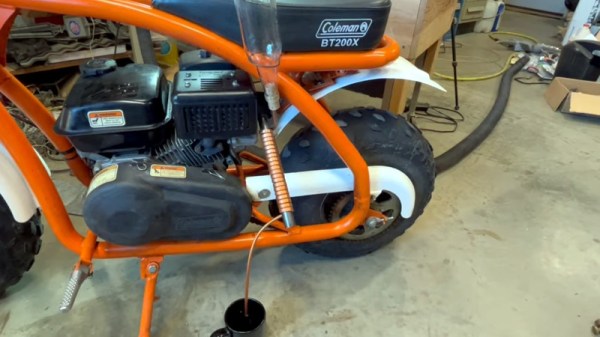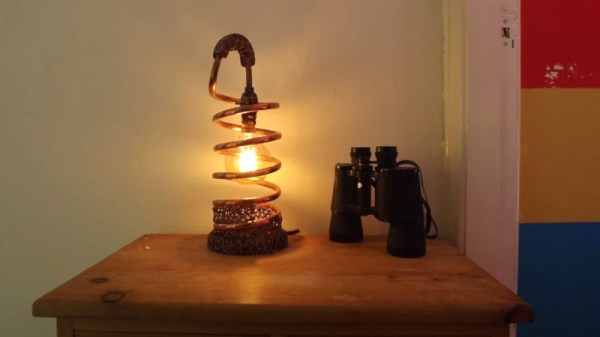The minibike is an American phenomenon which fascinates those of us from countries in which such contraptions are illegal on the road; they seem to deliver bucketloads of low-octane fun in which we are unable to participate. [HowToLou] has one, and as it’s something for use in the Great Outdoors it naturally requires some means of fixing a brew. His solution to the need for a mug of boiling water in out-of-the-way places? A gravity-fed heat exchanger for the exhaust pipe, fed from a reservoir made using an upturned bottle.
As can be seen in the video below the break it’s a simple enough piece of work but surprisingly effective. A piece of small-bore copper tube is passed through a cork into the bottle, then wrapped round a piece of pipe which forms an exhaust The resulting heat exchanger is insulated, the engine started, and the cork loosened just enough to cause a bit of water to flow. The result – a good flow of hot water for that morning coffee.
It may not be the most practical of water heaters, but it’s certainly a bit of fun even if it might not work with all the minibikes we’ve covered.













